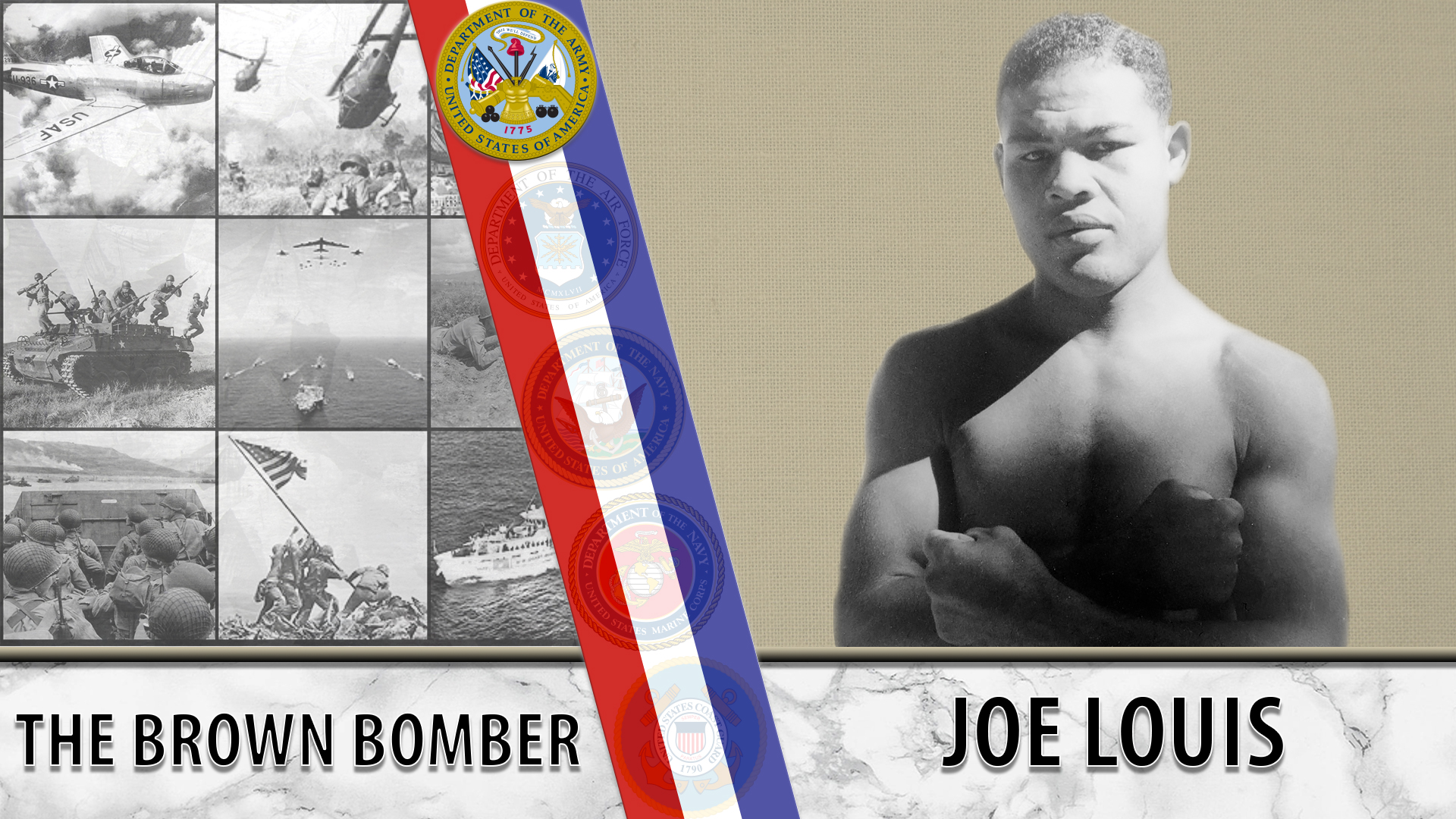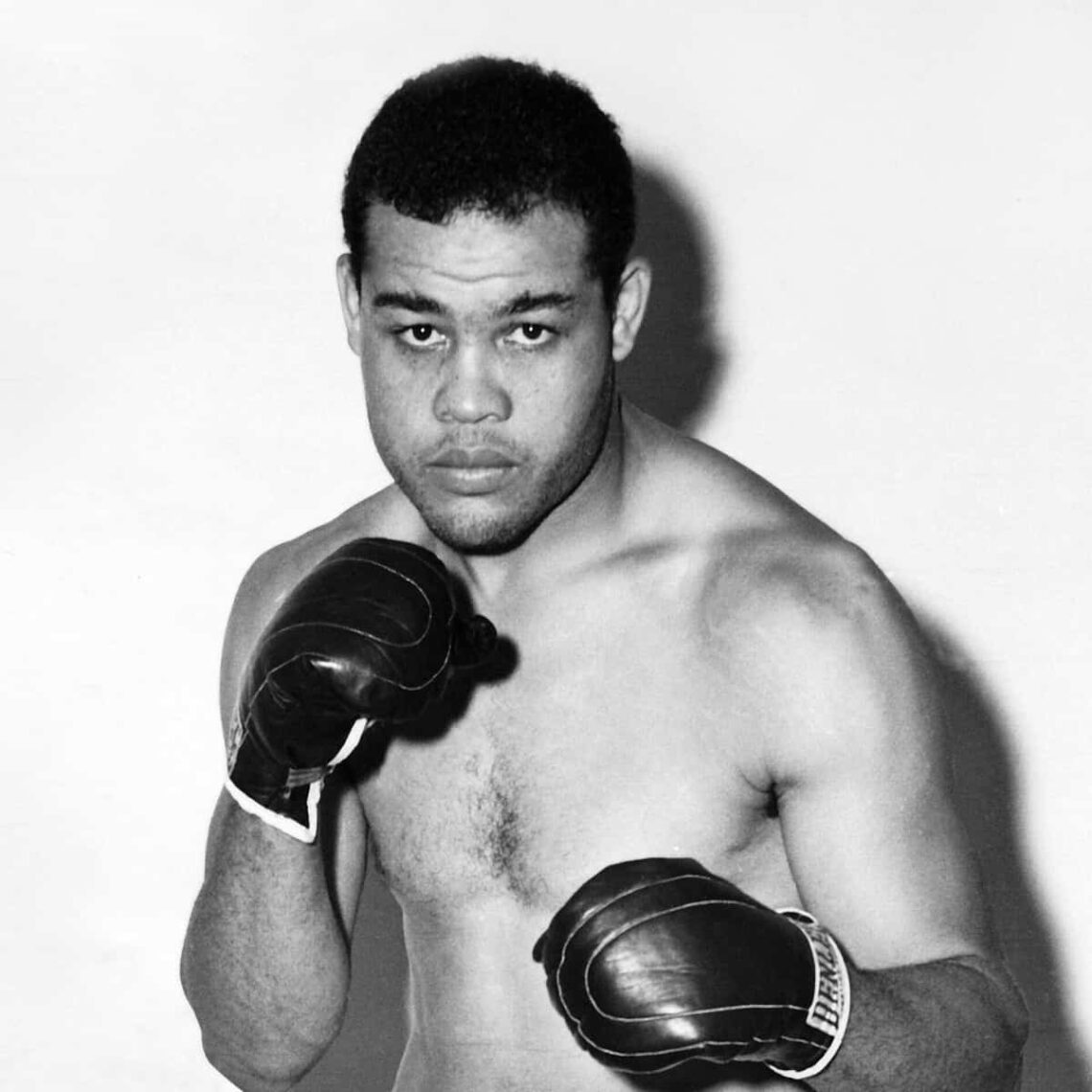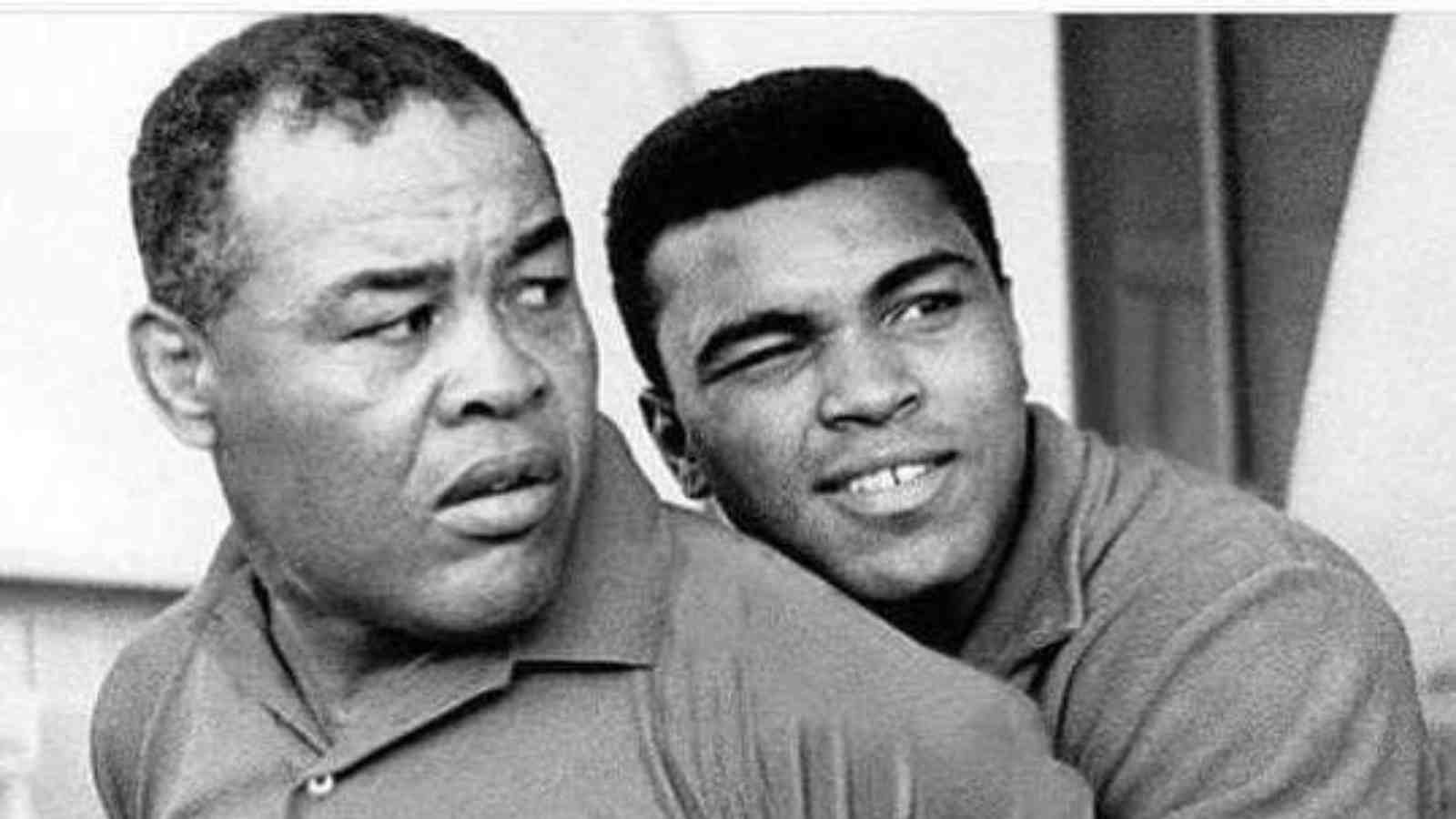What Size Was Joe Louis? Unpacking The Physical Presence Of A Boxing Legend
When we think about boxing legends, Joe Louis, the "Brown Bomber," truly stands out in a way that just about anyone can appreciate. His name, you know, it simply brings to mind images of power, of precision, and of a calm, almost quiet strength in the ring. People often wonder, naturally, about the physical attributes that made him such a dominant force. What size was Joe Louis, exactly? That question, it turns out, goes a bit deeper than just a couple of numbers on a scale or a tape measure.
It's a really interesting thing, actually, to consider how the physical dimensions of an athlete can shape their entire career. For someone like Joe Louis, his height, his weight, and his reach were not just statistics; they were, in some respects, the very tools he used to craft his legacy. Understanding these details helps us, you see, to picture him more clearly in those historic bouts, fighting his way to the top.
So, we're going to take a good look at what made up his physical frame, and how those measurements played into his incredible boxing style. It's a bit like trying to figure out the exact `size` of data in a system; you need to know all the different components to get the full picture, and that's precisely what we'll do for the great Joe Louis, too.
Table of Contents
- Biography of Joe Louis: A Look at the Man Behind the Measurements
- Personal Details and Bio Data
- The Dimensions of a Champion: What Size Was Joe Louis?
- How Size Shaped His Fighting Style
- Comparing His Size to Other Era Heavyweights
- The Evolution of His Physical Form
- Beyond the Numbers: The Impact of His Physicality
- Frequently Asked Questions About Joe Louis's Size
Biography of Joe Louis: A Look at the Man Behind the Measurements
Joe Louis Barrow was born on May 13, 1914, in Lafayette, Alabama, and he was, you know, the seventh of eight children. His family, like many others during that time, moved north during the Great Migration, eventually settling in Detroit, Michigan. It was there, in the bustling city, that young Joe first found boxing, almost by chance, really.
He started his amateur career in the early 1930s, and it was pretty clear, even then, that he had a special gift for the sport. His powerful punches and calm demeanor quickly made him a local sensation. He turned professional in 1934, and from that point, his rise was, honestly, quite meteoric. He won his first 27 professional fights, which is, well, just an amazing start.
On June 22, 1937, Joe Louis achieved his greatest boxing triumph, defeating James J. Braddock to become the world heavyweight champion. He held that title for an astonishing 11 years, 8 months, and 7 days, making 25 successful defenses. This record, you know, is still unsurpassed in any weight division, and it's something that really speaks to his dominance. His reign included some of the most famous fights in boxing history, including his two bouts against Max Schmeling, which had deep social and political meaning, particularly the second fight in 1938, which was, you know, a truly monumental event.
Louis retired from boxing in 1949 but made a brief comeback due to financial difficulties. He finally retired for good in 1951. Beyond the ring, he was a symbol of hope and pride for many, particularly African Americans, during a time of great racial prejudice. His dignity and quiet strength, basically, transcended the sport itself. He passed away on April 12, 1981, leaving behind a legacy that, honestly, continues to inspire. Learn more about Joe Louis's life and times on our site, it's quite a story.
Personal Details and Bio Data
To truly get a sense of Joe Louis, it helps to look at some of his key personal details, which, you know, give us a good framework. Just like when you're trying to figure out the `size` of a file, you need some basic information to start with, and these facts are pretty foundational for understanding him.
| Full Name | Joseph Louis Barrow |
| Nickname | The Brown Bomber |
| Born | May 13, 1914 |
| Birthplace | Lafayette, Alabama, USA |
| Died | April 12, 1981 (aged 66) |
| Stance | Orthodox |
| Total Fights | 70 |
| Wins | 66 |
| Losses | 3 |
| Draws | 1 |
| Knockouts | 52 |
| Championships | World Heavyweight Champion (1937-1949) |
The Dimensions of a Champion: What Size Was Joe Louis?
When people ask "What size was Joe Louis?", they're usually looking for his physical measurements, and these numbers, you know, really tell a part of the story. It's a bit like how we get the `size` of a database; it's not just one number, but a combination of different metrics that give you the full picture of its capacity and structure. For Joe Louis, his height, weight, and reach were key.
Height: The Towering Presence
Joe Louis stood at a height of approximately 6 feet 1.5 inches (about 187 centimeters). This measurement, you know, placed him pretty much squarely in the average to slightly above-average range for a heavyweight boxer of his era. He wasn't, say, an exceptionally tall fighter like some modern heavyweights, but his height was, frankly, more than sufficient for his style. It allowed him to stand his ground, yet he was also nimble enough to move around, which is, you know, a really good combination.
His height, you see, was just right for generating the kind of leverage he needed for his powerful punches. It gave him a good vantage point in the ring without making him too easy a target. So, it wasn't just about being tall, but about how that height worked with his other attributes, which is, in a way, quite fascinating.
Weight: The Heavyweight Standard
Throughout his career, Joe Louis's fighting weight typically hovered around 200 to 210 pounds (roughly 91 to 95 kilograms). For his championship fights, he usually came in right at that sweet spot, which, you know, was considered a very solid heavyweight build for the time. He wasn't, like, an excessively heavy fighter, but his weight was very, very well-distributed, giving him a dense and powerful frame.
His weight was, basically, a testament to his physical conditioning. He carried his weight with purpose, allowing him to deliver those famous concussive blows while maintaining good stamina. It's a bit like trying to find the `size` of data in each database; you need to know the specific numbers to understand the true volume, and his weight was a crucial volume measurement for his power.
Reach: The Extent of His Power
Joe Louis possessed a reach of about 76 inches (around 193 centimeters). This measurement, you know, is the distance from the tip of one middle finger to the tip of the other when the arms are outstretched horizontally. His reach was, frankly, quite good for his height, allowing him to keep opponents at a distance when he wanted, or to close the gap quickly when he saw an opening.
His reach, you see, was a critical factor in his ability to land his punches effectively. He could, for instance, throw his jab and cross with remarkable accuracy and power from a comfortable range. It wasn't, perhaps, the longest reach in boxing history, but how he used it was, honestly, what truly mattered. It's like understanding the `size` of an array versus an arraylist; the measurement itself is one thing, but how it functions in context is another, and Louis used his reach to great effect.
How Size Shaped His Fighting Style
Joe Louis's physical dimensions, you know, played a massive role in defining his unique and highly effective fighting style. He wasn't, for example, a fighter who relied on overwhelming size to simply push opponents around. Instead, his build allowed him to be incredibly balanced, a bit like a finely tuned machine, which is, honestly, quite impressive.
His moderate height and solid weight gave him a stable base from which to launch his attacks. He was known for his "textbook" style, characterized by a straight, powerful jab and a devastating right hand. His size allowed him to stand firm, absorb punches, and then quickly counter with his own, often overwhelming, barrages. It's a bit like how you might want to change the `size` of text elements in a program; you tweak a number, and it affects everything else, and his physical numbers certainly affected his entire approach.
The combination of his reach and his powerful, quick hands meant he could deliver a series of punches in rapid succession, a trait that earned him many knockouts. He didn't, for instance, waste movement; every punch was thrown with purpose and power, which, you know, was a direct result of how his physical frame was put together. He was, apparently, a master of economy in motion, and his size was perfectly suited for that.
Comparing His Size to Other Era Heavyweights
To truly appreciate Joe Louis's size, it's helpful to compare him to other heavyweights of his time, and even, you know, to those who came before and after him. The average heavyweight fighter in the 1930s and 40s was, generally speaking, a bit smaller than today's giants. So, Louis, at 6'1.5" and around 200-210 pounds, was, in some respects, a very formidable figure for his era.
For instance, Jack Dempsey, a legendary champion from an earlier era, was roughly 6 feet 1 inch and often fought around 187-190 pounds. So, Louis was, basically, a bit heavier and just as tall, which gave him a physical edge over some of the earlier greats. He was, honestly, quite a specimen for his time.
Compared to his contemporaries, like Max Schmeling (6'1", 195 lbs) or Billy Conn (5'11", 170-180 lbs, who moved up from light heavyweight), Louis was, you know, right in the thick of it, often possessing a slight size advantage or at least matching his opponents. His physical presence was, apparently, enough to intimidate, but it was his skill that sealed the deal. This really shows how his specific `size` measurements were quite competitive for the boxing world of his time.
Later heavyweights, like Muhammad Ali (6'3", 210-215 lbs) or George Foreman (6'3", 220+ lbs), were, of course, generally taller and often heavier. This shift, you know, highlights how the physical standards for heavyweights have evolved over the decades. But in his own time, Joe Louis's size was, very, very much that of a dominant champion, and that's something worth remembering.
The Evolution of His Physical Form
Like many athletes, Joe Louis's physical form, including his weight, did, you know, experience some changes throughout his long career. In his early days as a professional, he might have been a bit lighter, perhaps closer to 195 pounds, as he was still developing his full heavyweight physique. As he matured and gained more experience, his weight settled into that prime 200-210 pound range for most of his championship reign, which is, basically, where he was most effective.
Towards the very end of his career, particularly during his comeback fights in the late 1940s and early 1950s, his weight, you know, sometimes crept up. For his last professional fight against Rocky Marciano in 1951, Louis weighed in at 206.5 pounds, which was, apparently, still a respectable weight, but he was no longer in his physical prime. This change in `size`, you know, is a natural part of an athlete's journey, and it's something that can impact performance, much like how the `size` of a software object can change over its lifecycle.
His training regimen, which was, honestly, quite rigorous for its time, played a huge part in maintaining his optimal fighting weight and strength. He was known for his disciplined approach to conditioning, which allowed him to carry his weight with power and stamina. So, while his size had some natural variations, his dedication to physical preparation was, you know, a constant factor in his success.
Beyond the Numbers: The Impact of His Physicality
While knowing "What size was Joe Louis?" gives us concrete numbers, the true impact of his physicality goes, you know, far beyond just height and weight. It's about how those numbers translated into his presence in the ring, his punching power, and his incredible durability. His physical attributes, basically, combined with his skill and mental toughness, made him truly extraordinary.
His solid build meant he could absorb punishment and keep coming forward, a trait that, frankly, wore down many opponents. His powerful legs and core allowed him to generate immense force behind his punches, particularly his signature right hand, which was, apparently, legendary for its concussive effect. It's a bit like trying to understand the `size` of data in terms of bytes or gigabytes; the number itself is important, but what that `size` allows you to *do* with the data is the real story, and Louis certainly did a lot with his physical attributes.
Moreover, his calm demeanor in the ring, combined with his physical stature, often projected an aura of quiet confidence that could, you know, be quite unnerving for his opponents. He didn't need to posture or boast; his physical presence and his ability to deliver powerful blows spoke for themselves. This combination of physical prowess and mental fortitude is, you know, what truly made him one of the greatest heavyweights of all time, and it's a legacy that continues to resonate today, as of our current understanding of boxing history.
His physical dimensions were, basically, perfectly suited for the disciplined, powerful, and relentless style that he perfected. They were, in a way, the foundation upon which he built his record-breaking championship reign. You can find more insights into his fighting techniques and their connection to his physical build by linking to this page here.
Frequently Asked Questions About Joe Louis's Size
People often have specific questions about Joe Louis's physical measurements, and these are some of the common ones, which, you know, really help to clarify his physical profile.
How tall was Joe Louis?
Joe Louis was, generally speaking, about 6 feet 1.5 inches tall (approximately 187 centimeters). This height, you know, was quite typical for heavyweight boxers during his prime era, providing him with a good balance of reach and stability in the ring. He wasn't, like, the tallest fighter ever, but his height was very, very effective for his style.
What was Joe Louis's heaviest weight?
While Joe Louis typically fought in the 200-210 pound range during his championship years, his heaviest official weight for a professional fight was 218 pounds (around 98.9 kilograms) for his bout against Ezzard Charles in 1950. This was, you know, during his comeback, and it was a bit heavier than his prime fighting weight, which, in a way, reflects the natural changes in an athlete's body over time, kind of like how the `size` of a file can increase with more data.
What was Joe Louis's reach?
Joe Louis had a reach of approximately 76 inches (about 193 centimeters). This measurement, you know, allowed him to effectively use his powerful jab and follow-up punches from a comfortable distance. It was, basically, a very good reach for his height, contributing significantly to his offensive capabilities in the ring, and that's something that really made a difference.
For more detailed boxing statistics and historical records, you might want to check out the BoxRec website, which is, you know, a pretty comprehensive resource for boxing enthusiasts and researchers alike. You can find more information there, for instance, about Joe Louis's fight record and other boxers' statistics: BoxRec - Joe Louis.
Understanding "What size was Joe Louis?" is, you know, more than just looking at a few numbers. It's about appreciating how his physical dimensions, combined with his incredible skill and unwavering spirit, forged one of the most dominant and respected careers in boxing history. His legacy, basically, reminds us that true greatness in sports often comes from a harmonious blend of physical attributes and sheer talent, and that's a lesson that, honestly, applies to many areas of life.

Joe Louis: A Champion for His Country - VA News

Joe Louis Height, Age, Body Measurements, Wiki | CELEBRITIES BODY SIZE

Joe Louis Wallpapers - Top Free Joe Louis Backgrounds - WallpaperAccess